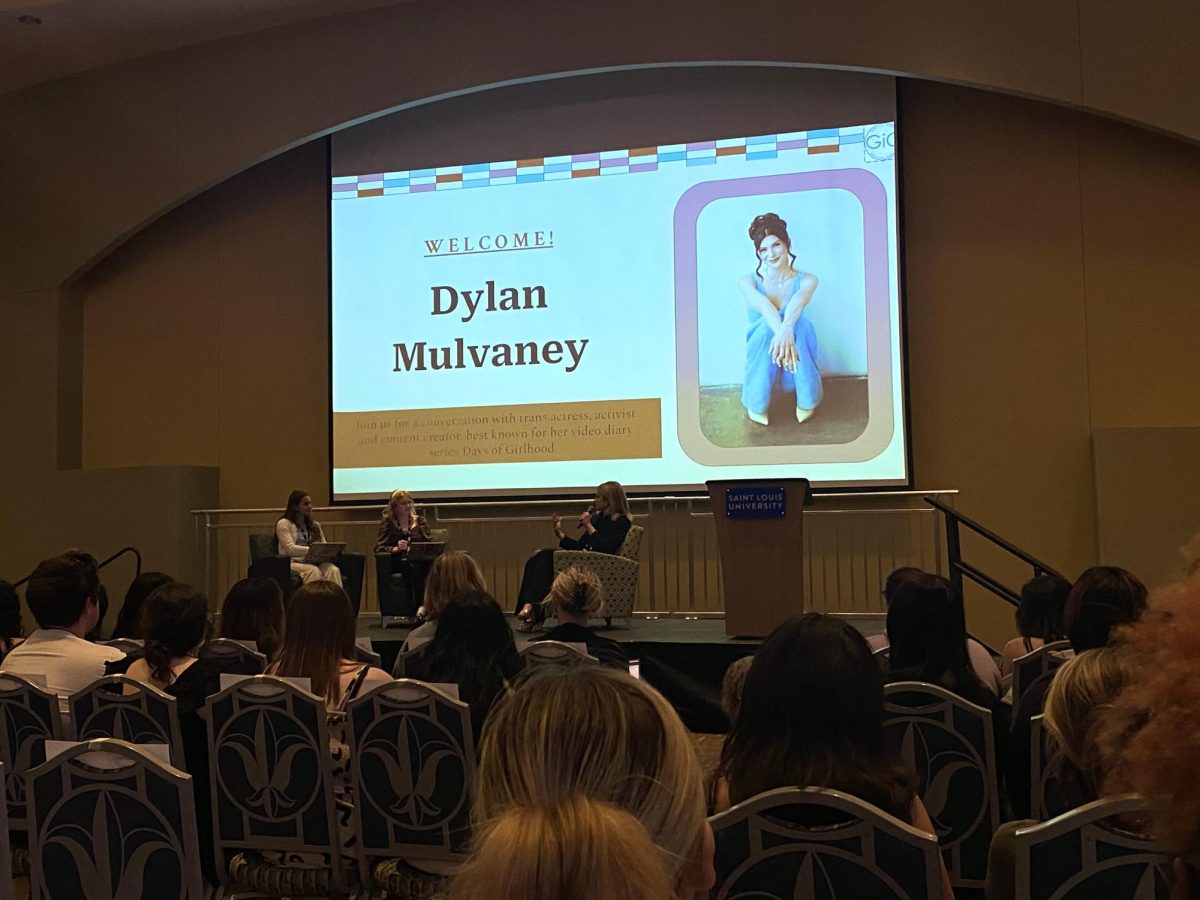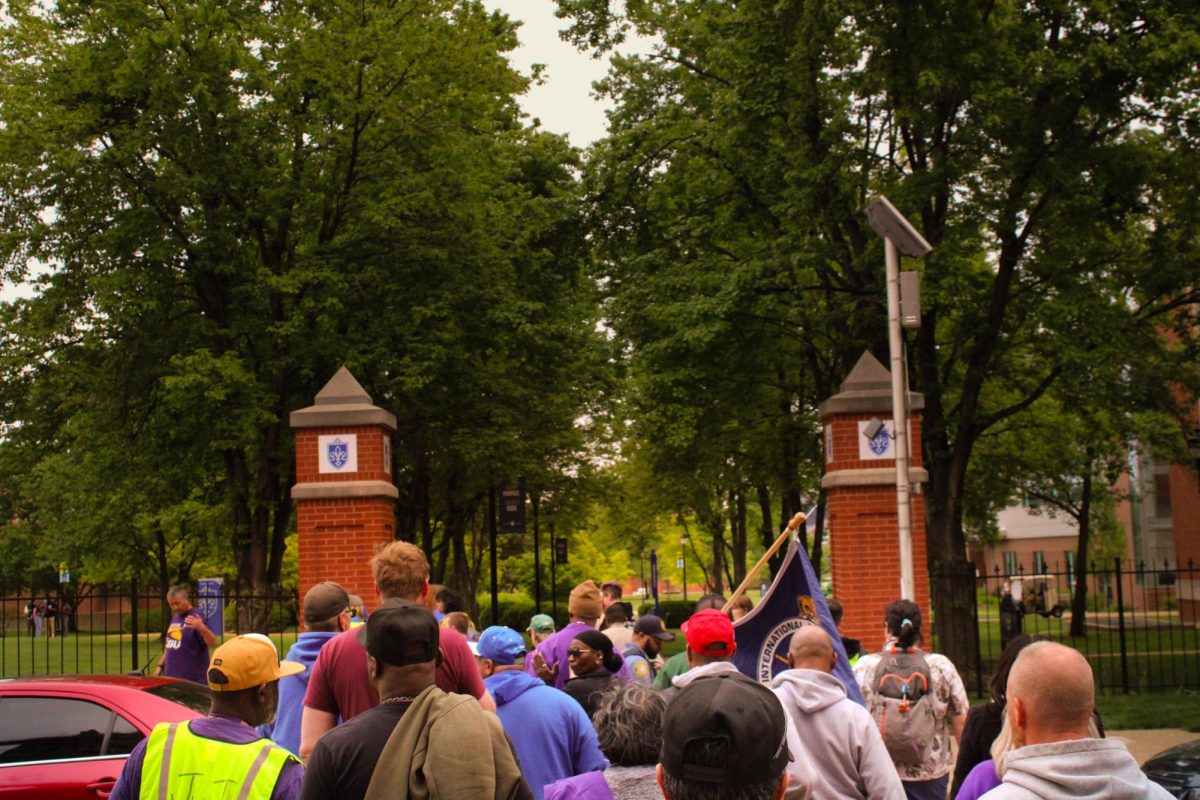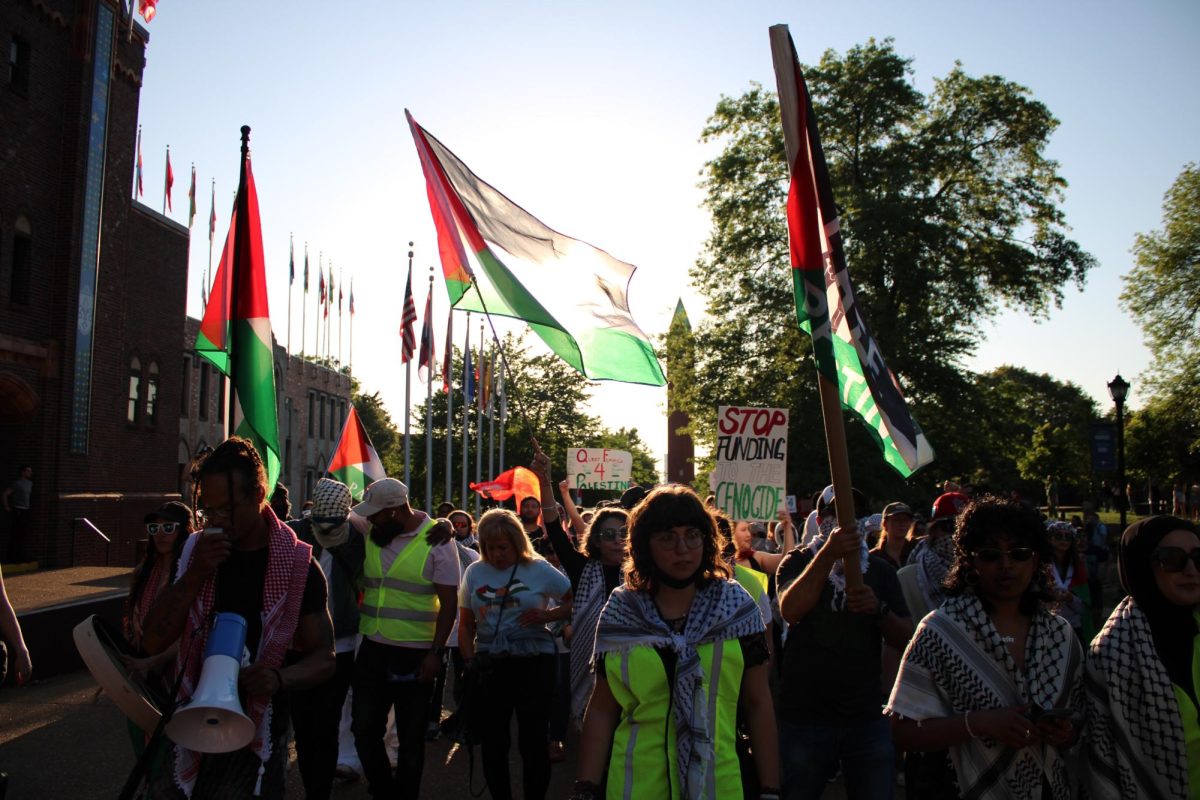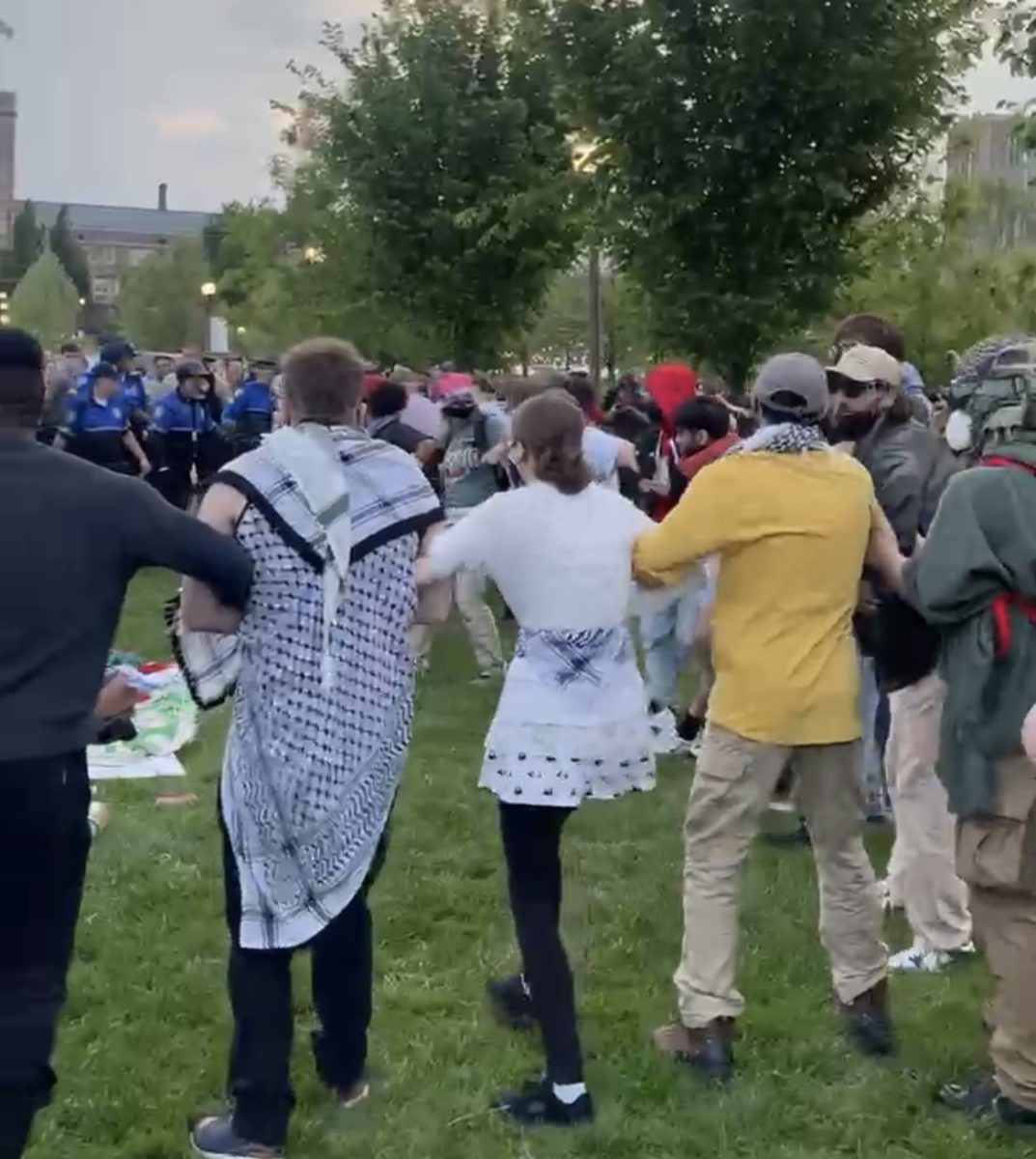On Monday, the Saint Louis University School of Law hosted two
St. Louis Post-Dispatch journalists who were imbedded with a Marine
division during last spring’s invasion of Iraq, along with the
Post’s Washington bureau chief, Jon Sawyer, as part of the James C.
Millstone Memorial Lecture. They spoke on the topic of “The Bush
Administration and the War in Iraq: The Taming of the Media?”
Jeffrey Toobin, a staff writer for The New Yorker and CNN legal
analyst delivered the Millstone lecture, “Democrats v. Republicans:
A Growing Gap in the Aisle,” on Sunday night at the Center for
Contemporary Arts in University City. He also made an appearance
before the panel on Monday in Cook Hall.
The embedded journalists, photographer Andrew Cutraro and
reporter Ron Harris, arrived in Kuwait in late January and were
embedded with a Marine division during the invasion and subsequent
rush to Baghdad. Harris said that when he left for Iraq he would
have thought the chances of war were fifty-fifty, but when he saw
the massive amount of armorments that were already in position he
was nearly positive there would be a war.
“There was that feeling that the American people weren’t really
being told the truth,” he said.
Both Harris and Cutraro said that compared to past military
exercises in which military personnel were reluctant to speak with
and often resented journalists, during this war, the media
functioned as a lifeline between soldiers and their friends and
family at home. They also said soldiers were surprised by how
seriously they took their job and how hard they worked to clarify
their stories.
The Post-Dispatch had assigned the two to cover a feature story,
which would look at “young men going to war for the first time,”
Cutraro said, not function as a source of overarching coverage.
“Ron and I fully realized we’d have this very narrow view of the
war,” he added, saying he did not feel the military had exploited
their position.
“I’m proud of how we went about this,” said Sawyer talking about
the Post-Dispatch’s pre-war coverage. In the months before the
invasion, the paper sent Sawyer to Iraq, Saudi Arabia, Syria,
Jordan and other countries in the region to document the sentiments
on the ground.
“You got a sense that there were deep misgivings about where we
were heading,” Sawyer said. “Iraq was not quite the same as the
totalitarian police state that was being presented in Washington by
the administration.”
“That kind of coverage tended to get short shrift,” he
continued. “In our very best newspapers there were stories over the
last year and a half that were prime examples of media
manipulation.”
His greatest criticism was of front-page stories in major
newspapers like The New York Times and The Washington Post that
made the case for weapons of mass destruction in Iraq, but were
based on “unattributed, leaked source material.”
“The media were so prepared to cover the ‘bang-bang’ story,”
Sawyer said, “that they gave shorter shrift to covering harder
questions.”
Harris said he thought most coverage during the invasion was so
dramatic that when the major combat ended, Americans had a
prevailing perception of war as an easy thing. He noted that no
battle he covered had lasted longer than four hours and quoted on
military official who said, “This isn’t a war, this is a
whooping.”






